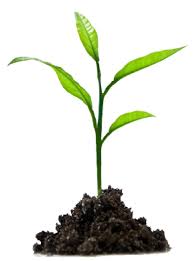Language
- The Montessori classroom is designed in such a way that all activities gear themselves naturally towards the development of the skills required for oral and written language and reading.
- Language development is also encouraged in the classroom because of the freedom of conversation allowed to the children.
- In the Montessori environment encouragement of self expression is fostered through communication between children and their peers and children and adults.
- In the Language area of the environment, vocabulary is enriched in a number of ways. Precise names are used for all of the objects and apparatus.
- Vocabulary classification and matching exercises develop visual perception, enrich vocabulary development, and develop the left to right movement.
- A child will continue to progress at their own pace through the reading program. Concrete concepts lead to abstract ones.
- A child in the Montessori classroom develops a sense of wonder at his own powers and this wonder becomes a motivating force toward further acquisitions.
- Language is based on the Phonetic way in a Montessori School. Language starts tracing of Sand paper Letters to help the child get the impressions of symbols and become aware that language is made up of sounds.
Additional Language Fun –
Circle Time can be used for many language experiences. Daily calendar , lessons , stories, songs , poems , plays , instruments , movement , etc. Allow children to have a turn to talk.Circle time is specifically for the children to speak out their previous day experiences either it is about environment or when they are out with their family . most of circle time , we often make props that we use during songs or poems.
Pre-Reading Skill Exercises
Picture Matching Exercises - These are sets of cards having pairs of various pictures or shapes for the children to match. The purpose of these matching cards is to develop visual perception. Children also develop a sense of left to right movement, which indirectly prepares them for reading. We change this work so the matching cards can be varied to provide interest and often they correspond with unit study lessons.Matching Cards
SeqOpposite Cards
Category Cards
Go-Together Cards
Rhyming Cardsuence Cards
Writing –
As the children go through the reading program it is important that they write down the words or letters they've worked with. Provide a writing station with paper; lined and unlined, pencils, markers, envelopes, etc. for children to make books, cards, invitations, letters, etc. I also make an alphabet book for handwriting practice.Single Word Books - Small booklets with a single phonetic word printed on each page. One booklet for each short vowel are provided inorder to help the child to read independently .
Sight Words - A set of some sight words are made for the children to match and write down. These will help them to be prepared for upcoming sentences and books. We also like to introduce capital letters at about this point in the program.
Sentence Building - These are steps for beginning to read sentences. It was such a great idea and so made a set. The steps continue with building a sentence to match a picture, a sentence that matches a picture, and sentence strips.
Language being an unending process in Montessori environment serves for better analysing and helps the child in developing the thinking process while dealing with Orthographic complications at higher levels of reading and writing language at higher grades .

Environment inspires and motivates the child for self development.
